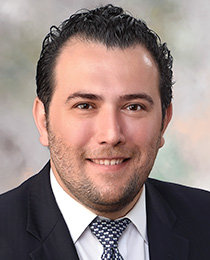Adult Scoliosis: Treatment and Success Stories

Adult scoliosis, marked by an abnormal curvature of the spine, can significantly affect one’s comfort and overall quality of life. Unlike scoliosis in younger individuals, adult scoliosis often involves degenerative changes in the spine, which can lead to pain and disability.
What is adult scoliosis?
Scoliosis refers to a condition where the spine curves sideways into an "S" or "C" shape. Although it is often diagnosed in children and teens, adults can also develop scoliosis. This can be a progression from scoliosis in childhood or it can emerge due to spinal degeneration, osteoporosis, or other age-related issues. One study found that nearly nine percent of participants age 40 and up had at least mild scoliosis.
What are symptoms of scoliosis in adults?
Symptoms often include back pain, leg pain, and noticeable changes in posture, like leaning to one side or forward. Patients often experience fatigue and difficulty maintaining upright posture, especially throughout the day. They often can point out a specific hour in the day when they start leaning forward or sideways.
How is scoliosis treated in adults?
Many adults with scoliosis can manage their symptoms and improve their quality of life through non-surgical treatments. These treatments aim to reduce pain, improve function, and prevent the curvature from worsening.
Physical therapy for scoliosis
Physical therapy is vital for managing adult scoliosis. Therapists create tailored exercise programs to strengthen core muscles, improve posture, and increase flexibility. Regular exercise can help alleviate pain and in select cases may improve spinal alignment. One type of physical therapy that is especially beneficial for patients with scoliosis is the aquatic form. Lifespan provides this service in multiple locations following a prescription from a scoliosis specialist.
Pain management for scoliosis
Medications such as NSAIDs, acetaminophen, or muscle relaxants can help reduce pain. In some cases, doctors might recommend steroid injections or nerve blocks for severe pain. Patients who present with pain-tolerance conditions undergo a specific preoperative optimization pathway to help them get through the treatment with excellent pain management and eventually enjoy an opioid-free life, if possible.
Bracing
While bracing is more common in children, some adults might benefit from wearing a brace to provide support and alleviate pain. In select patients, braces can help stabilize the spine and aid in controlling back pain. However, the downside is decreased muscle activity.
Lifestyle changes
Maintaining a healthy weight, practicing good posture, and avoiding activities that worsen pain are crucial for managing scoliosis. Ergonomic adjustments at work and home can also be very helpful. Recent weight loss medications have been helpful in short term follow-ups. However, it is unclear what the long-term effects are on patients’ wellbeing.
Surgical treatment options for adult scoliosis
When non-surgical treatments are not effective or if the curvature is severe and progressing, surgery might be necessary. Surgery aims to correct the spinal curvature, relieve pain, and improve function. There are three main options for surgical treatment.
Spinal Fusion
The most common surgery for adult scoliosis is spinal fusion. This involves fusing two or more vertebrae together using bone grafts, rods, and screws, stabilizing the spine and preventing further curvature.
Decompression Surgery
For cases where scoliosis compresses spinal nerves, decompression surgery may be performed. This involves removing bone or tissue pressing on the nerves to relieve pain and improve mobility.
Osteotomy
An osteotomy involves cutting and realigning bones to correct severe spinal deformities. This procedure is often combined with spinal fusion for the best results.
Successful scoliosis surgery outcomes
Many patients experience significant improvements in their quality of life following scoliosis surgery. Here are some examples of successful outcomes.
Pain Relief
A primary benefit of scoliosis surgery is prevention of curve progression and recontouring the spine to the proper alignment. Three decades worth of research have shown significant pain and disability score improvement with adult scoliosis. A patient in their 70s, who suffered from debilitating back pain caused by severe scoliosis, underwent spinal fusion surgery. After the surgery, this patient reported significant pain relief and regained the ability to walk longer distances without assistance.
Improved Function and Mobility
Surgery can restore proper spinal alignment, leading to better posture and increased mobility. Patients often find they can return to activities they previously enjoyed but had to give up due to pain and disability. Another patient of mine, in their 50s, was unable to maintain an upright posture due to progressive spine malalignment and nerve compression. Following decompression surgery, osteotomies, and spinal realignment, this patient can stand tall and has regained strength in the legs, leading to a better quality of life.
Enhanced Quality of Life
Successful scoliosis surgery can significantly enhance a patient’s quality of life. Many patients report improved self-esteem, better sleep, and the ability to engage in daily activities with less discomfort. One of my patients was diagnosed with idiopathic scoliosis as a teenager. In their early 20s, they attempted conservative treatments for six months without relief. After selective spinal fusion with osteotomy, their curvature was corrected and their shoulder and rib symmetry was re-established. Three days after surgery, this patient was at home recovering, and two weeks later, had resumed their normal college schedule.
Adult scoliosis can be a challenging condition, but a combination of non-surgical and surgical treatments offers hope for relief and improved quality of life. With proper treatment, adults with scoliosis can lead active and fulfilling lives. The spine specialists at Lifespan Orthopedics Institute are here to help—learn more about the spinal conditions that we treat on our website.

About the Author:
Bassel G. Diebo, MD
Dr. Bassel G. Diebo is a fellowship trained spine and scoliosis surgeon with Lifespan Orthopedics Institute. His expertise is in spinal alignment and posture, and the surgical treatment of scoliosis, kyphosis, lordosis, flatback syndrome, spondylolisthesis, and hip-spine syndrome.
Lifespan Living Newsletter
Find a Doctor

The right provider is in our network
Search more than 1,200 providers in our network.



